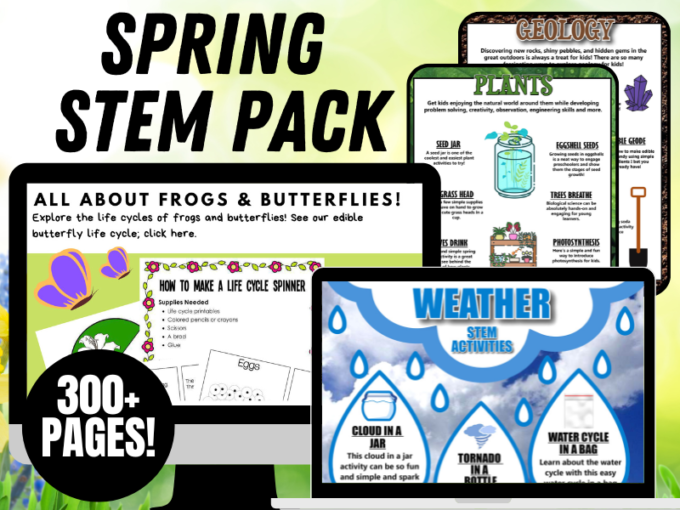Explore the structure of plant leaves and how water travels through leaf veins with the kids this season. This fun and simple plant experiment is a great way to see behind the scenes of how plants work! You won’t beLEAF your eyes (see what I did there)!
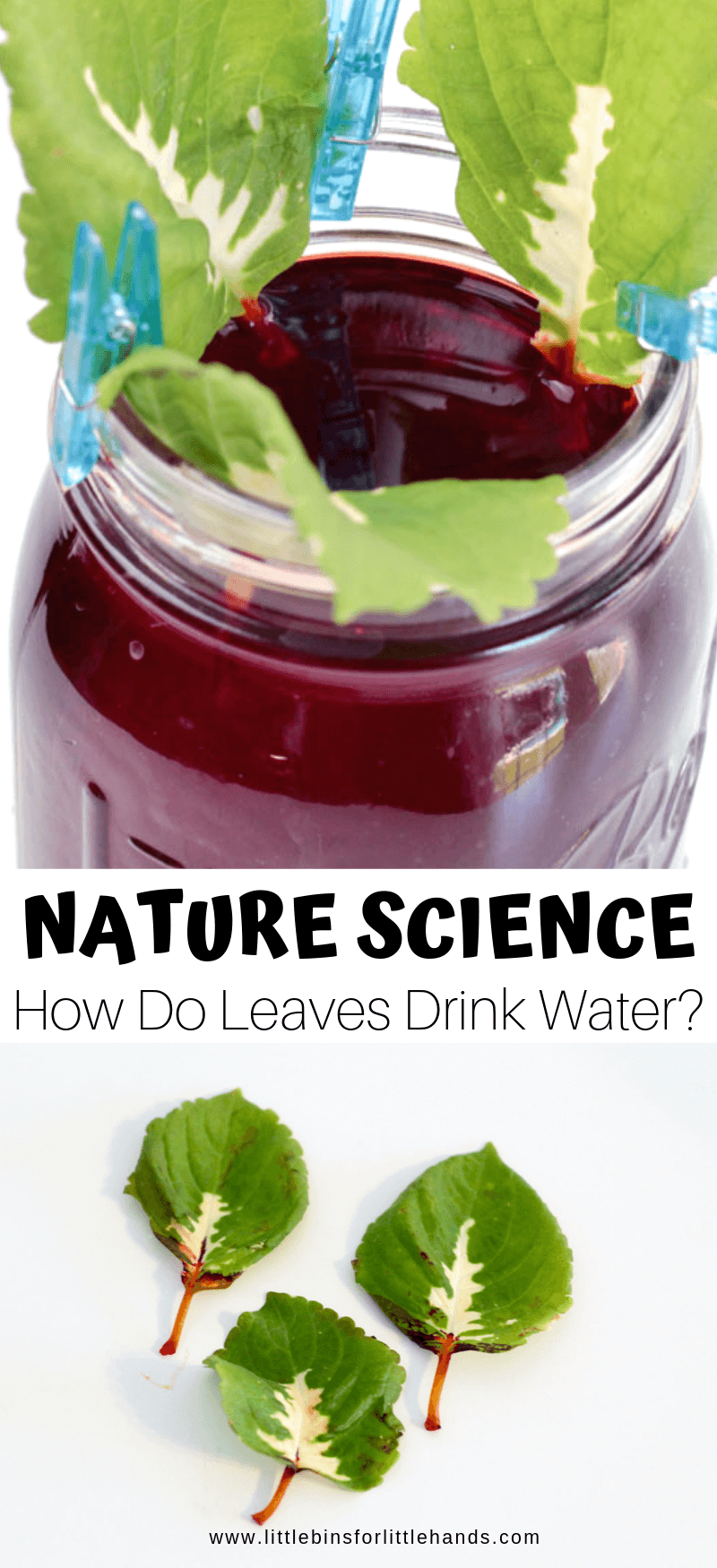
Explore Plant Leaves For Spring Science
Spring is the perfect time of year for science! There are so many fun themes to explore. For this time of the year, our favorite topics to teach your students about spring include weather and rainbows, geology, and of course plants!
Get ready to add this simple leaf veins activity to your spring STEM lesson plans this season. If you want to learn about how plants transport water and food let’s dig in! While you’re at it, make sure to check out these other fun spring science activities.
Our science experiments are designed with you, the parent or teacher, in mind! Easy to set up, quick to do, most activities will take only 15 to 30 minutes to complete and are heaps of fun! Plus, our supplies lists usually contain only free or cheap materials you can source from home!
Why not pair this hands-on leaf veins experiment with our printable parts of a leaf coloring sheet!
What Are The Veins Of A Leaf Called?
The veins of a leaf are vascular tubes that come from the stem up into the leaves. The arrangement of veins in a leaf is called the venation pattern.
Some leaves have the main veins run parallel to each other. While other leaves have a main leaf vein that runs through the center of the leaf and the smaller veins come off that.
Can you see the type of venation pattern or leaf veins on the leaves you pick for the activity below?
What Do The Veins Of A Leaf Do?
You will notice how the cut leaves take up water from where they would have been attached to the stem. This is because the water moves through the branching leaf veins. Putting colored dye in the water in the vase allows us to observe this movement of water.
You will notice that the veins in leaves have a branching pattern. Are the leaf vein patterns of different leaves the same or different?
Leaf veins are made up of two types of vessels (continuous long thin tubes). Xylem vessel, which transports water from the roots of the plant to the leaves via capillary action. Phloem, which takes the food made in the leaves via photosynthesis, to the rest of the plant.
Also try this celery experiment to observe the movement of water through the vessels.
What Is Capillary Action?
Capillary action is the ability of a liquid (our colored water) to flow in narrow spaces (the stem) without the help of an outside force, like gravity and even against gravity. Think about how large tall trees are able to move lots of water so far up to their leaves without a pump of any kind.
As water moves into the air (evaporates) through a plant’s leaves, more water is able to move up through the plant’s stem. As it does so, it attracts more water to come alongside it. This movement of water is called capillary action.
Check out more fun science activities that explore capillary action!
Learn About Leaf Veins In The Classroom
This simple spring activity with leaves is perfect for your classroom. My best tip is this! Conduct this experiment over the course of a week and have your students observe the changes each day.
This activity does take a day or two to really get moving, but once it does it’s really fun to observe.
Set up a jar with leaves for small groups of students to observe. You can easily try it with a variety of leaves and perhaps even different colors of food coloring. The possibilities are endless from oak tree leaves to maple leaves and everything in between.
Do you see a difference between how the process works with different leaves?
Note the changes each day, what is the same, what is different (compare and contrast)? What do you think will happen (prediction)? These are all excellent questions to ask your students!
Leftover leaves? Why not learn about plant respiration, try a leaf chromatography experiment or even enjoy a leaf rubbing craft!
Get your FREE printable spring STEM cards!
Leaf Veins Activity
Let’s get right to learning about how water moves through the veins in a leaf. Head outdoors, find some green leaves and let’s observe how they really work!
Materials Needed:
- Jar or glass
- Fresh leaves (a variety of sizes is fine).
- Red food coloring
- Magnifying glass (optional)
TIP: This experiment works best with leaves that are white in the center or light green, and have obvious veins.
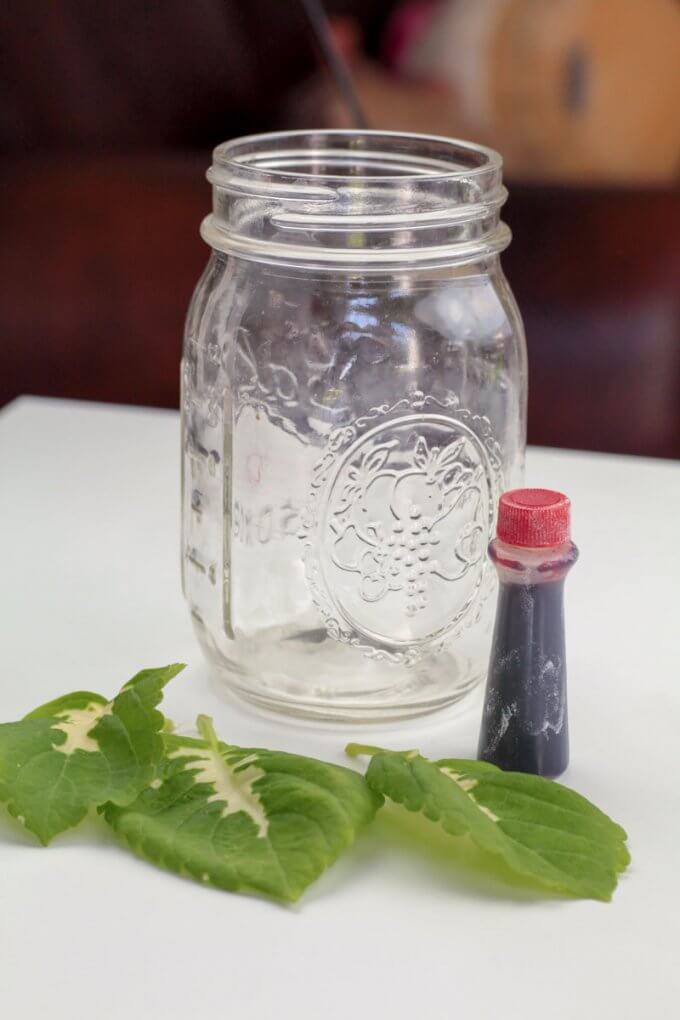
Instructions:
STEP 1: Cut a green leaf off of a plant or tree. Remember, you really want to find leaves that are light green or have a white center.
STEP 2: Add water to your glass or jar and then add food coloring. Add several drops or use gel food coloring. You really want it DARK red for high drama!
STEP 3: Place the leaf into the jar with the water and food coloring, with the stem inside the water.
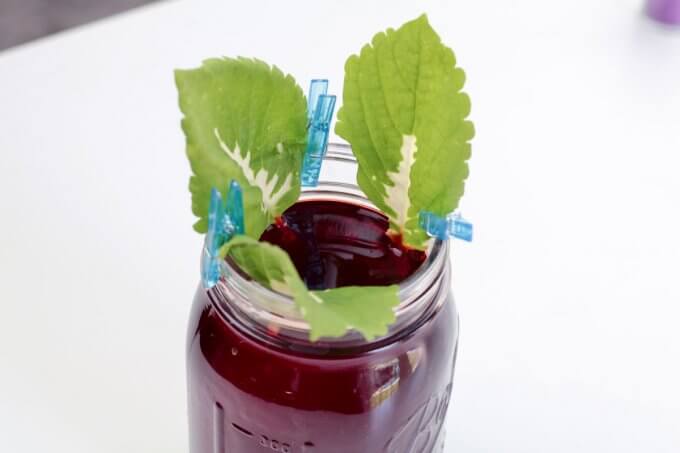
STEP 4: Observe over several days as the leaf “drinks” the water.
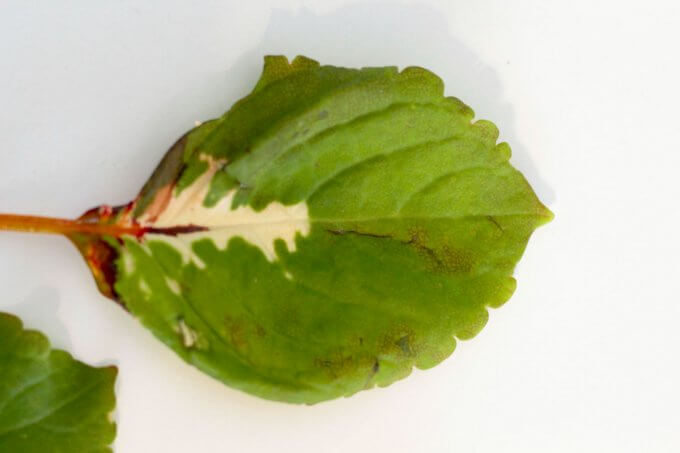
Bonus: Do Trees Talk To Each Other?
Did you know that trees can talk to one another? It all starts with photosynthesis! First, we watched this shorter video from National Geographic, but then we wanted to know more! Next, we listened to this Ted Talk from the scientist, Suzanne Simmard.
Additional Plant Activities To Extend The Learning
When you finish investigating the veins of leaves, why not learn more about plants with one of these ideas below. You can find all our plant activities for kids here!
See up close how a seed grows with a seed germination jar.
Why not try planting seeds in eggshells.
Here is our suggestions for the easiest flowers to grow for kids.
Growing grass in a cup is just a lot of fun!
Learn about how plants make their own food through photosynthesis.
Explore the important role plants have as producers in the food chain.
Name the parts of a leaf, the parts of a flower, and the parts of a plant.
Explore the parts of a plant cell with our printable plant cell coloring sheets.
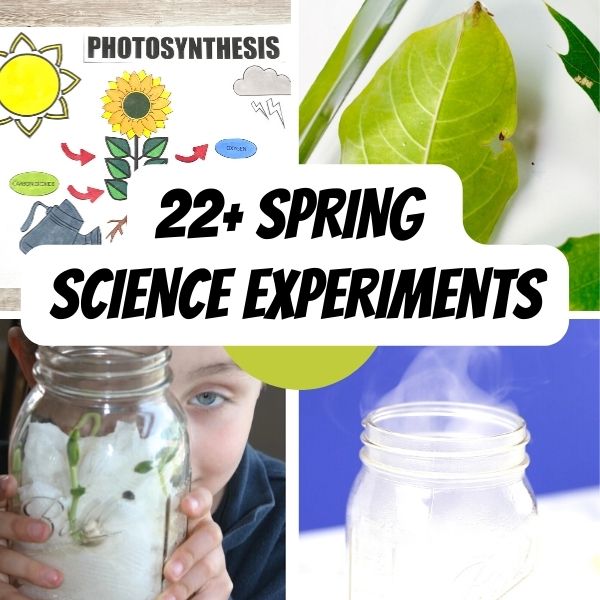
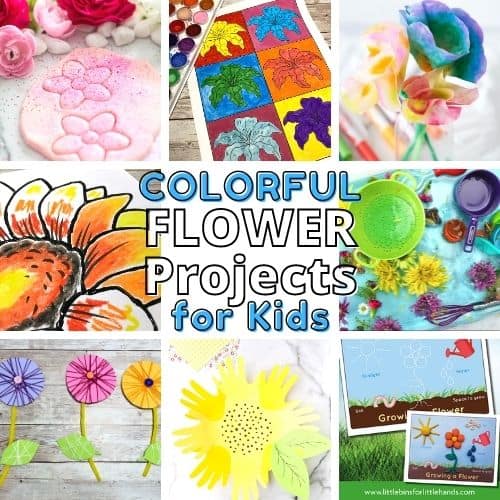
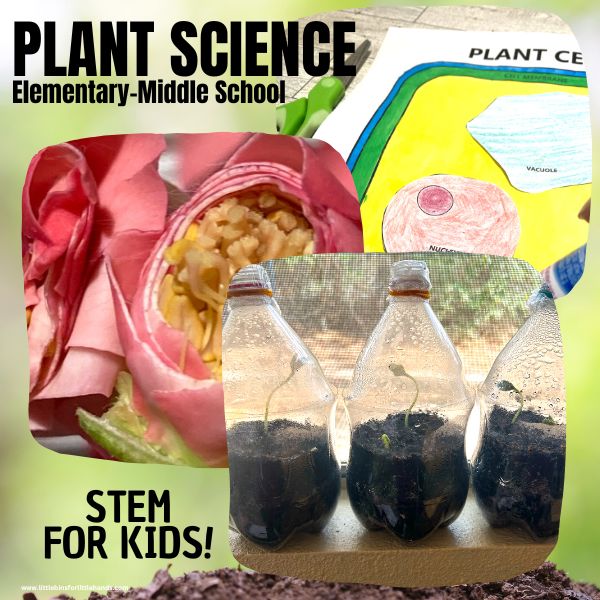
Printable Spring Activities Pack
If you’re looking to grab all of our spring printables in one convenient place, plus exclusive printable activities with a spring theme, our 300+ page Spring STEM Project Pack is what you need!
Weather, geology, plants, life cycles, and more!



